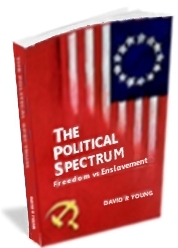
There is a lot of contention regarding Fake News. How do you know what is fake and what is not? If you accept Fake News, you run the danger of making choices or forming opinions that are not correct and this can make you sound pretty uninformed or even stupid.
1. Fake News has an agenda.
An agenda is an underlying often ideological plan or program. It may be good or bad, but where Fake News is used, rest assured the overall objective, if discovered, would not be broadly supported.
Those who write fake news first and foremost have an objective. This is also known as propaganda. It is either used to gain support for the objective or to bring disrepute to someone or something that is blocking the objective.
The objective may or may not be obvious, but if a news article is “cheering” on attacking the subject it can become obvious that there is an agenda of some sort. (Even if to just sell something.)
When reading an article or hearing a report note if it is trying to persuade you toward or away from the person, group, place, or thing being reported on. If it does, then ask yourself what the agenda is. It is likely Fake News and definitely deserves further investigation.
2. Fake News attempts to create an agreement or disagreement.
You pick up the newspaper and read: “There was an accident at the corner of Cleveland and Highland this morning at 2:00 A.M. involving two cars. Both drivers were under the influence of alcohol. Neither was hurt. Both were arrested for DUI. The charged drivers were Joe Doe of (address) and Joe Schmo of (address). Neither was hurt in the accident.”
You would see this as real news, right? Why? For one, you are not being asked to agree or disagree with this statement. It’s just facts.
Fake news as a tendency to elicit agreement for the subject or person being covered or to create disagreement toward the subject, person, group, etc.
Why? Because it is based on #1 above.
When you read an article, notice if it tries to elicit your agreement or tries to get you to disagree with the subject or person of interest. If it does, it is most likely Fake News with an agenda.
3. Fake News contains generalities.
In the new sample above, the article is filled with specific, verifiable facts. It’s also very dry and uninteresting. You might just skip any others. To make news interesting reporters add “color” to a story by finding interesting aspects of the story that might elicit an emotional response from the reader. You are more likely to read a report with good color. But, regardless of the color added, the facts would still be present and verifiable by anyone.
Fake news contains statements that sound like a fact but are instead generalities. Facts are specific and verifiable. The time, place, and what actually occurred are facts.
Fake news is impossible to verify. It does not give when or where the event took place. Who said what, etc. It contains generalities that may or may not have happened. “Someone said…” or, “experts say…” but WHO said it isn’t given. You cannot verify who “everybody” is. Be suspicious of “anonymous sources”. That term may sound impressive and mysterious, but if a person can’t stand behind his facts, why trust him?
When reading news, see if there are facts to verify the story for yourself. If not it is most likely Fake News.
4. Fake News contradicts its own reporting by including an “escape clause”.
Because slander can bring lawsuits, Fake News writers always protect themselves. This is often done by covering “both sides” of a story or using Anonymous sources.
You may read a very long article asserting how someone or something is so and so. Fake news will include, usually in the last paragraph, that the evidence is not conclusive or an investigation is going on to find the facts, etc. Shouldn’t the report have already investigated in order to report the facts? Why is he reporting it if he doesn’t know?
In reading a long article about a situation, it may be a good idea to read the last few paragraphs to see if they end with having no real evidence. If so, read the article critically or skip it. It is likely Fake News.
5. Fake News reduces general well being.
The real news is not always pleasant. But when you are given the facts it does not leave you hanging in mystery about what is going on.
Fake News thrives on creating mystery, uncertainty, or upset. If in #1 above, your agenda was to create havoc in a town, city, or country, you could accomplish that with cleverly written Fake News. And if you had enough news outlets repeating the fake news, it certainly would seem true and would create havoc. The news is not intended to raise your spirits. So if you feel depressed by what you see and hear on TV, turn it off for a week and see if you don’t have a change of attitude.
There is no attempt here to tell you who is reporting Fake News. Only you can decide that for yourself. The above five points will help. But you are ultimately responsible for the data you consume.
If a subject or situation is important to your well being, it is your responsibility to do your own research to get the exact time, place, and what happened. Don’t just believe a “news agency or person ” until you have gone over the above points and verified they are dealing with facts and not presenting you with Fake News.
Stay truly informed.




[…] I got a nice response to last week’s newsletter from David R. (Randy) Young, author of The Political Spectrum: Freedom vs. Enslavement. So I took a look at Randy’s website and found this gem: […]